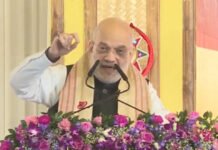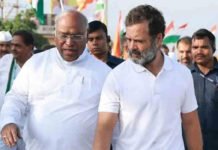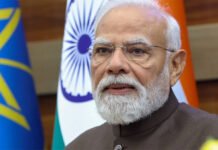The inaugural session of the 18th Lok Sabha commenced today, amidst significant discontent from opposition parties over several issues, including alleged irregularities in examinations and the appointment of the Pro tem Speaker. This session, set to run until July 3, is poised to be a highly eventful period in the Indian parliamentary calendar.
Controversial Appointment of Pro tem Speaker
The appointment of Bhartruhari Mahtab as the Pro tem Speaker has sparked considerable debate. Opposition parties have voiced their concerns, arguing that more senior members of the House should have been considered for this role in accordance with parliamentary traditions. Despite these objections, the President will administer the oath to the Pro tem Speaker, who will then oversee the oath-taking of the new members of the 18th Lok Sabha.
President Draupadi Murmu’s Address to Both Houses
On June 27, President Draupadi Murmu is scheduled to address a joint session of both houses of Parliament. This address is a critical event, setting the legislative agenda and providing a platform for the President to outline the government’s priorities. The opposition, however, is expected to leverage this occasion to highlight their grievances and challenge the ruling party’s policies.
Election of the Speaker of the Lok Sabha
The election for the Speaker of the Lok Sabha is slated for June 26. This election is crucial as it will determine the individual who will preside over the House’s proceedings, ensuring the smooth conduct of debates and legislative processes. Given the current political climate, the election is likely to be a contentious affair, with the opposition expected to put up a robust fight.
Oath-Taking Ceremony
The session began with the swearing-in of members of the 18th Lok Sabha. Prime Minister Narendra Modi was the first to take the oath, followed by MPs supporting the Chair. Subsequently, ministers and other members were sworn in. On the first day, approximately 280 members took their oaths, with the remainder to be sworn in on the second day. The oath-taking process follows a state-wise alphabetical order.
New Dynamics in the House
The 18th Lok Sabha presents a changed landscape. The opposition, previously confined to a limited presence, now holds a significant number of seats. With 234 members, including 99 from the Congress party alone, the opposition is poised to play a crucial role in parliamentary proceedings. The ruling party, with 293 seats, of which 240 are from the BJP, will need to navigate this more balanced distribution of power.
Key Issues: Exam Irregularities and Agniveer
The opposition is expected to adopt an aggressive stance on several critical issues. Exam irregularities and the Agniveer scheme are likely to dominate discussions. These issues, alongside the controversy over the Pro tem Speaker appointment, provide the opposition with substantial grounds to challenge the ruling party. The opposition’s strategy includes leveraging these issues to corner the ruling party during the Lok Sabha Speaker election.
Motion of Thanks on the President’s Address
From June 28, both houses will engage in discussions on the motion of thanks on the President’s address. This debate is a pivotal parliamentary procedure, allowing members to express their views on the government’s agenda. Prime Minister Modi is expected to respond to this discussion on either July 2 or 3, addressing the concerns raised by the opposition and outlining the government’s vision for the future.
As the 18th Lok Sabha’s first session unfolds, the political landscape in India is set for a period of intense activity. The opposition’s increased strength and their willingness to confront the ruling party on various issues suggest that this session will be marked by significant debates and possibly contentious exchanges. The outcomes of these discussions will have far-reaching implications for India’s legislative and political trajectory.
















